|
|
|
Happy New Year to Everyone!
Ringing in the new year: literally!
May 2014, the year of the snake, bring peace, health, happiness and prosperity to you all. The first of those four is likely enough, but let us aim high for the coming twelve months.
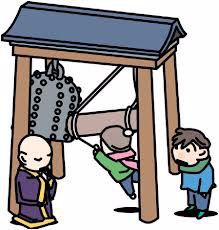 |
|
For the first time in perhaps I decade, I spent New Year’s Eve waiting for midnight to come, after which my family and I went to a local Buddhist temple (in our case, Hokokuji). I live in Kamakura, once a Buddhist stronghold in Japan, and there are at least four temples within a ten minute walk of my house. Add another ten minutes to my walking radius and add perhaps another ten temples. I can see one from the window of my office room, and hear the bells each day. And bells are why we made our way there, in the first dark minutes of the very young year.
There is a custom known as “Joya no Kane,” which refers to ringing of the bells at a temple, traditionally 108 times, one for each of mankind’s worldly desires that cause us suffering. Things vary from place to place, but many temples will allow us layfolk to stand in line and ring it one time to rid us of our wordly passions and purify us for the upcoming hear. My family lined up in the cold for our turn at one meditative moment into which much significance, prayer, and positive energy are channeled.
A brief prayer. A swing of the log-like implement into the large, tubular bell. We absorb the reverberations of the deep, vibrant sound, then bow gently, and turn toward home, with heightened expectations for the coming year. That, in a nutshell, is Joya no Kane.
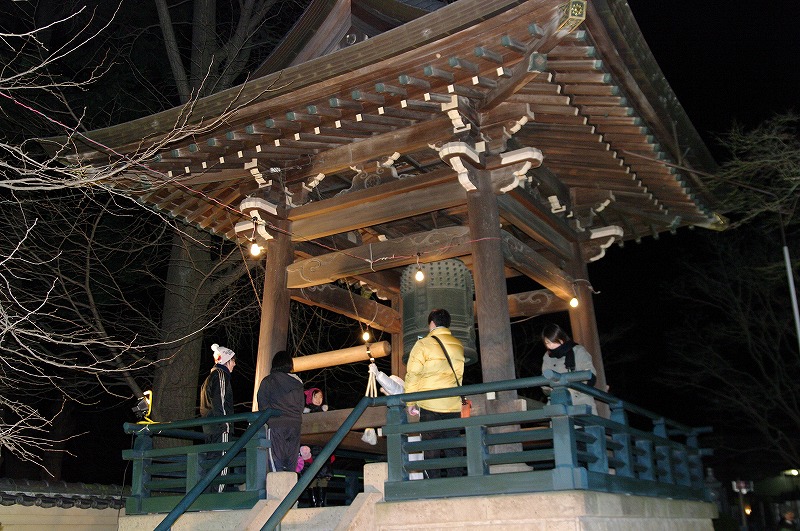 |
|
I recall a musician friend of mine, now deceased, who tried to explain the concept of the 108 passions, known as Bonno. She embodied them unabashedly and enjoyably. All 108, I think. They are, she explained, the physical and emotional temptations that keep us from heaven, and cause us suffering on earth. “But,” she added with an emphatic smile, “without Bonno, there would be no music!” Nothing has ever rang more true, no pun intended.
Some might have a Bonno to pick with sake (pun intended this time), but I will take my chances.
Again, a Happy New Year to all readers.
Warm regards,
John
|
Sake Rice and Coffee Beans
More in common than you might think!
Soon after beginning to study sake, one comes to realize there are
 |
|
many varieties of sake rice. And while not all sake is made from “official” sake rice (and it is a legal definition – as compared to “regular” rice for eating), most premium sake is indeed brewed from one of the hundred-odd strains of sakamai, or sake rice.
Note this does not mean that without proper sake rice one cannot make good sake. It is, actually, quite possible to make decent sake with run of the mill regular rice. But it is just much,
much easier to make good sake from proper sake rice. And in truth, to make the
best sake, you
must use proper sake rice.
Much like grapes used in wine, while there are many varieties of sake rice out there, if you know about a dozen, you will know most of the rice varieties you will encounter. And rice varieties do contribute greatly to the flavors of the final sake, not surprisingly. However, the connection between rice and final sake is not nearly as tight as the connection between grape varieties and the final flavors in a wine.
This is, methinks, an important point. Sake rice leads to sake flavors; yes. However, as important as good rice is, it is but half the battle. Just how the rice is handled - milled, soaked, steamed, propagated with mold, coaxed via temperature et al along a particular fermentation path - will have a huge amount of say in determining the nature of the final sake.
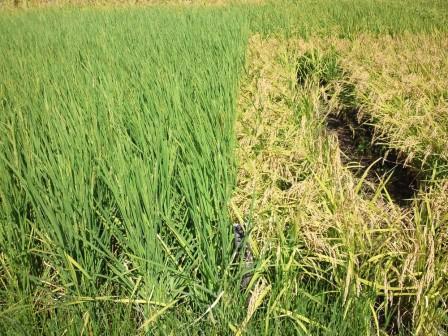 |
|
As a very simple example, the same Yamada Nishiki rice milled to the same 40%, for example, might go to two brewers. One would let it absorb more water, thereby helping it dissolve more quickly in the fermenting mash, thereby leading to a richer, broader, heavier flavor than the other. Or, one might have more koji mold propagated upon it, thereby dosing it with more sugar-creating enzymes, thereby enabling the yeast to go on a feeding frenzy, leading to a significantly drier sake. So the process itself contributes so much to the final sake. It is about much more than just the rice, although that is important as well.
I often liken it to coffee beans, and making coffee.
~~~~~~~~~~~~~~~~~~~~~~~~~~~~~~~
Coffee is my second favorite liquid on the planet, with pure water beinga d-i-s-t-a-n-t third. Kind of the yang to sake’s yin in my daily life. And it recently struck me that good coffee beans are to good coffee as good sake rice is to good sake.
In other words, to make good coffee, you need to start with good beans. These will come from one of a handful of good growing regions. And each of the major varieties of coffee beans will have its own main characteristics: some are more acidic than others, some are fuller and richer. But the bean alone does not the coffee make!
We can start with the same coffee beans and end up with a very wide range of coffees. For example, beans can be lightly roasted, more thoroughly roasted, or mercilessly charred. This will lead to light coffee, richer coffee, or charred-flavor coffee.
On top of that, one can use an espresso maker, or drip press the coffee.
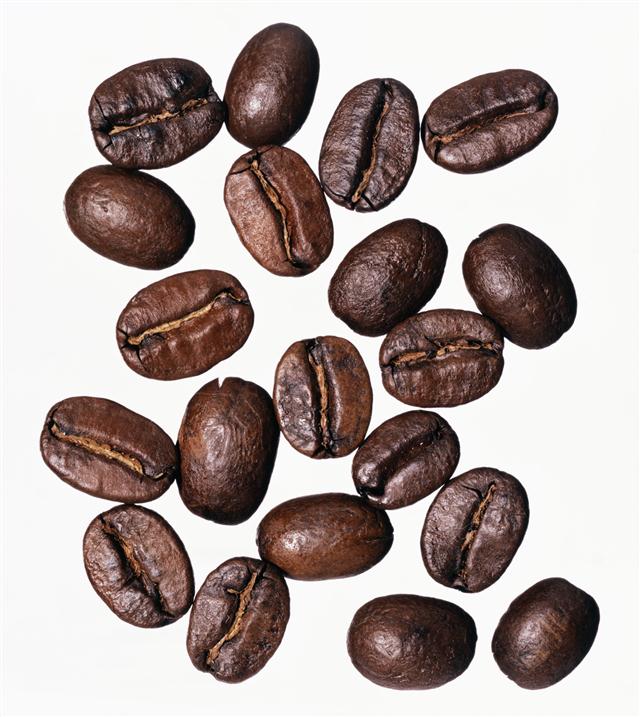 |
|
And even amongst those two extremes – and everything in between – there are little choices and decisions, like the water temperature (too hot, or just right?) or one-holed or three-holed cones. There is no one right decision; rather, each choice will lead to a different taste in spite of having started with the same beans. Even before that comes into play, bear in mind the grind: a find grind and a coarse grind will affect things massively as well.
So, you have the roast, the grind, the method, the machine, the water temperature, the apparatus, and the "touch" of the person making it all. You can start with good beans, but you have to do everything else right too. And what is right is not set in stone either. Very often, what one “master” considers anathema is precisely what makes another’s coffee so good. Go figure!
With good tools and methods, you can make a decent cup of coffee with mediocre beans. However, it is much,
much easier to make good coffee if you start with good beans. And, to make the
best coffee, you
must start with good beans. And therein lies the connection between good sake and sake rice.
Restating: It is possible to make decent sake with run of the mill regular rice. But it is just much,
much easier to make good sake from proper sake rice. And in truth, to make the
best sake, you
must use proper sake rice.
~~~~~~~~~~~~~~~~~~~~~~~~~~~~~~~
Sake rice’s tenuous connection to its soulmate, the coffee bean, notwithstanding, the above might naturally give rise to the question, with all the manhandling of the rice, and the variations used in brewing methods, it it possible to assign “typical” flavor profiles to rice types, and is it possible to identify them in blind tastings like wine grapes?
The answer is yes, it is possible, but not with great accuracy, and it does take a bit of experience. I recall a tasting put on by the Japan Agriculture Co-Op of Okayama Prefecture, wherein we tasted about 100 Yamada Nishiki-based sake, followed by about 100 Omachi-based sake, from all over Japan. What they had in common was that the Yamada Nishiki and Omachi used were both grown in Okayama. After tasting one hundred sake made from one rice, you got a feel for that rice. Then moving on to the other rice was like entering a totally different universe.
However, if I had just one or two of each, and was asked “which is the Omachi, and which is the Yamada?,” it perhaps might have been more difficult.
So yes, the rice-to-sake connection is there; but no, it is not as tight as the grapes-to-wine connection. And yes, the rice is massively important in making great sake. But no, it is not the only factor involved. As is usually the case in sake-related topics, it is delightfully vague.
|
|
Industry News: Sake shipments likely to end up for the year, but huge challenges remain
Only a small bit, but we will take what we can get
It looks like sake consumption will end the year up for the second year
 |
|
in a row, something that has not happened in close to 30 years. Yes, it will be less than five percent, and that is barely clear of margin-of-error range. But we will take what we can get!
The better news is that premium grades continue to do well. Junmai-shu, and all four types of Ginjo-shu are close to an average of double digit growth in Japan. They still combine to be less than ten percent of all sake made, so overall we are still not talking about much, but let us relish any good news that we can get.
However, there are some very formidable challenges in the year ahead. Namely, "Special Clause 87," a tax clause giving breaks to smaller brewers, is due to expire and currently there is no plan to extend it. There will be critical meetings in early January, but if it is not extended the industry will likely lose a large number of breweries that will not be able to continue to exist. Some estimates say hundreds of the remaining 1300 could disappear; others are less pessimistic.
Also, we can expect across the board price increases, long overdue actually, due to this and to rice shortages of recent.
And, with the recent change in Japan's government, just how much support for sake will remain is in doubt. The "Enjoy Japanese Kokushu" (national beverage, i.e. sake) project may fizzle before gathering critical mass and momentum. Then again, maybe not. It all remains to be seen, but should be much clear in only a couple of weeks. Let us keep our collective fingers crossed on one hand, and keep a glass of sake in the other.
|
|
|
Sake Brewery Tours Expands!
Akita! Kansai! More than just sake! Make 2013 the year you participate!
In 2013, you have more opportunities to experience sake.
Sake Brewery Tours will have two 5-day tours: one to Akita and one to Kansai (Kyoto, Nara and Shiga). Kansai has been added as a new destination this year!
In addition, Nippon Travel Agency, one of the largest travel agencies in
Japan, just announced the schedules for two tours for their "Exclusive Sake Tour" program to central Japan, for which they will be partnering with Sake Brewery Tours. Don't miss the chance to sign up early registering before November 30. Space is extremely limited, so act now. Learn more here.
Details of the Akita and Kansai regions are as follows.
Akita – four breweries
February 23 (Sat) - 27 (Wed): Yuki no Bosha, Ama no To,
Manabito/Mansaku no Hana, Kariho
Kansai – 3 breweies
March 4 (Mon) - 8 (Fri): Tsuki no Katsura (Kyoto), Shichihon Yari (Shiga), Harushika (Nara)
In addition, the Kansai tour will include an optional visit to Tamagawa in Kyoto to see the only non-Japanese toji in history, Mr. Philip Harper on March 9th.
 |
|
Both tours will include some very special features. In addition to learning from the world's best sake sensei, John Gauntner, we will spend a lot of time at sake breweries, dine with kuramoto, and dive into cultural activities, which include:
Akita - making soba at the Kariho brewery, a cooking lesson from a local expert at a farm, a visit to Mr. Ito's (the owner of Kariho) historic private residence, a private minyo folk music performance and a tranquil stay at Tsuru no Yu onsen (hotspring). Learn more here.
Kansai - Food and sake parings only available in the area, using local
delicacies such as funazushi and a lunch with local game meat with the owner of Shichihon Yari, a one day excursion to the Shigaraki pottery region with Rob Yellin, a visit to a yuba (a creamy soy vegetarian food, a by-product of tofu) maker, and join the Goma fire ritual performed by Ajari, a Buddhist monk who went through the Sennichi Kaiho-gyo, a seven-year marathon pilgrimage and spiritual quest.
This is really the ultimate Japan experience - all packed into five days.
Learn more here.
To find out more about Nippon Travel Agency's Exclusive Sake Tour in
January and March, visit this site. |
|
 Announcements and Events Announcements and Events
Sake Professional Course
Japan, January 21 ~ 25, 2012
Only four, er, make that TWO seats remain open!
The next Japan-based Sake Professional Course will take place the
week of January 21 to 25, 2013, in Tokyo, Kobe, Kyoto and Osaka, Japan. This is it, folks, the most important thing I do all year.
The Sake Professional Course, with Sake Education Council-recognized Certified Sake Professional certification testing, is by far the most intensive, immersing, comprehensive sake educational program in existence. The course is identical to the US-based course, but with two days of brewery visits - impossibly tiny to incredibly huge - tacked on to the end. Furthermore, each evening is spent eating in fine restaurants with the best sake in the world.
The five days together leave "no sake stone unturned."
The tuition for the course is JPY180,000 (at 80 yen to the dollar, about $2250). This includes dinner each night as well as all course materials, but does not include transportation or lodging. For more information about the daily schedule and to read a handful of testimonials, click here Feel free to contact me directly at sakeguy@gol.com with any questions about the course, or to make a reservation.
~~~~~~~~~~~~~~~~~~~~
Sake Professional Course Level II
The Level II Sake Professional Course, with SEC-supported Advanced Sake Professional testing, is scheduled for February 11- 15, 2013. Note that this course is only open to graduates of the Level I course. Should you be interested in attending, please email me with that request.
Sake Education Council Website
Please take a moment to check out the website for the Sake Education Council, the organization behind the Certified Sake Professional and Advanced Sake Professional certifications. We plan to grow steadily, strongly and continually, and we will need the support of all those that love sake to do so. Follow us through the "usual suspects" of social media.
Sake Homebrewer's Online Store
Please be sure to check out Homebrewsake.com for supplies, information and a forum, including lots of supporting information on everything from recipes to history. I have been meaning to mention this site and the gentleman behind it, Will Auld, but have repeatedly forgotten in past newsletters. The site is replete with instruction, augmented with videos, schedules, and more. If you are even remotely interested check this site out right away.
Don't forget the archives!
Older editions of this newsletter are archived here.
Really old editions are archived here.
|
 Sake Education Central Sake Education Central
Sake's Hidden Stories and The Sake Notebook are now available for the Kindle, Nook and iBooks!
The Sake Notebook is now available for the Kindle as well as the Nook. And now, it is available for iBooks on iTunes as well!
Sake's Hidden Stories too is now availabe on the Kindle as well as the Nook. And now, it is available for iBooks on iTunes as well!
Both are
less expensive than their original pdf version too. Now is your chance to learn more about sake from your phone or tablet! Check 'em out!
Sake Dictionary App for the iPhone, iPod and iPad
"For 99 cents, this app ROCKS!!"
-a satisfied customer
There you are, perusing a menu, or standing in front of a shelf of great sake, or perhaps reading a sake newsletter… and up pops one of those hairy, pesky sake terms in Japanese. You know you have heard it many times, but dammit, you just cannot remember what it means now…
No problem! Just whip out your iPhone or iPod and fire up your trusty old version of
The Sake Dictionary. In a matter of seconds, you’ll be amongst the cognoscenti once again. But… if only you could pronounce it properly. Now that would really rock!
Done! Just tap on the term and you will hear a clear example of how to pronounce the term in Japanese. Repeat it a couple of times and the term is yours for eternity, to toss about and impress your mates.
What’s more, it’s
less!
Less than what it cost before, much less. Like less than one-seventh less. For a limited time only, the audio-enhanced version of The Sake Dictionary iPhone app is available for a mere $0.99.
|
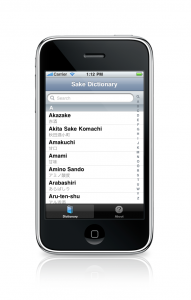 |
|
|
The Sake Dictionary is a concise little package of all the terms you might ever come across when dealing with sake. Almost 200 of them - including sake grades, rice variety names, seasonal sake terms, special varieties, rare types, post-brewing processing words and the myriad terms used in sake production - many of which are not even familiar to the average Japanese person on the street - are listed up here with concise, useful and clear definitions and the written Japanese version as well. And now, with the new audio component, you can listen and learn just how to pronounce those terms properly.
Start to toss around Japanese sake terms like you were raised knowing them! Gain a level of familiarity hitherto unimaginable! Avoid frustrating paralysis when faced with a sake-related purchase!
Get your copy of The Sake Dictionary now and never be confused by sake terms - or how to pronounce them - again.
Get it here: http://itunes.com/apps/sakedictionary
(Note if you have already purchased it, this upgrade to the audio version is free. Just go to iTunes and get it!)
|
Are you not getting this newsletter? I realize that is like asking that
"those not present please raise your hand," but for future reference, should you spontaneously stop receiving this newsletter, please go here and sign up again. Should that not work, please go to www.sake-world.com.
Email newsletter services are very careful not to be considered spam enablers, but the problem is that often very valid email addresses come back bounced as invalid. It is an unavoidable problem. So if you or someone you know is not getting this, or stop(s) receiving it inexplicably, please do take a moment to double check that you are still subscribed.
Sincere apologies for the hassle, mixed with gratitude for reading this newsletter. |
I hope you have found the above information helpful and entertaining. For more information about all things sake, please check out www.sake-world.com. Until next month, warm regards, and enjoy your sake. 
Questions and comments should be directed to John Gauntner, at this email address.
All material Copyright, John Gauntner & Sake World Inc.
Regards,
John Gauntner
Sake World, Inc
 . . 
|
|
